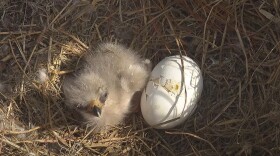Hurricane season is underway and it's expected to be another active year.
In the Eastern Pacific, we have already seen the formation of Hurricane Barbara, Tropical Storm Cosme and forecasters are currently tracking Tropical Depression Four and potential areas of development.
That said, it's the second week of June and we have yet to see any significant areas of development this year in the Gulf of America or anywhere in the Atlantic basin. In fact, there has been only one potential area of interest in the Atlantic so far this year, an upper level low that held only a small chance of attaining tropical characteristics.
It is typical for the Eastern Pacific hurricane basin to become active earlier than the Atlantic basin. It's a combination of a few factors including higher ocean surface water temperatures and more favorable winds earlier in the year contribute to the typically early start in the East Pacific.
So it is not at all unusual for there to be very little activity in June in the Atlantic basin, even in what is expected to be an above average year. In fact, the Eastern Pacific basin hurricane season is considered to begin earlier, on May 15th rather than June 1.
As the Eastern Pacific becomes more active, elsewhere in the Pacific, it's been an unusually quiet start to tropical season.
The Northwest Pacific hurricane basin, which includes typhoons that impact Japan, is off to one of the slowest starts in over 50 years. The first storm to reach tropical storm strength, Wtip, happened on June 11, the latest storm to form in the Western Pacific since 1984. The Pacific Typhoon season averages about 25 storms per year, with most storms occurring between June and October.
There is no singular reason for the unusually slow start to the Western Pacific season. In the Pacific, we are in a "neutral" ENSO phase, meaning we are in between an El Niño (observed in 2024) and La Niña.
Other years with a similarly slow start to the Western Pacific tropical season were in years that transitioned to La Niña after a strong El Nino, which is not a good match for the current "neutral" ENSO state.
Some possible reasons for lack of storms developing in the Western Pacific include an increase in atmospheric shear in the past several weeks.
Copyright 2025 Storm Center







